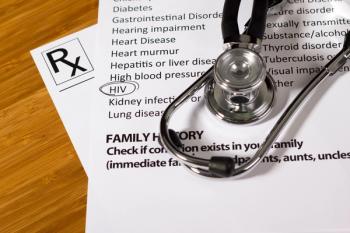
Can we make PBMs obsolete?
When it comes to employee drug utilization reviews, one pharmacist is beating PBMs at their own game. If businesses and healthcare systems followed her lead, more would change than just the DURs.
Last fall, as one of several speakers to address a group of pharmacy students, I presented my thoughts on the future of pharmacy. I have strong feelings about where pharmacy is going and where we need to go. And I don’t think it’s all doom and gloom, either. Yes, we have problems, but kids today are really smart, and I’m confident they’ll figure things out. My theory is that there is always an opportunity, even in the worst times. I had a great time talking to the students, both during my presentation and after.
All the other presentations were good, but one caught my attention. The speaker was a self-employed pharmacist. Where the future of pharmacy was concerned, she truly was a visionary, at least in my eyes. I don’t think the students realized it, but they were listening to a revolutionary plan to take back our profession. Her idea was simple and within the reach of every pharmacist. This woman was making a difference while she performed rewarding work and paid the bills. And she was not dispensing or actually working in a pharmacy.
The angle
What this pharmacist was doing was showing up the pharmacy benefit managers (PBMs) by actually doing what they claim to do, but don’t.
Working with small-to-medium-sized companies, she performs drug utilization review (DUR) on their employees and makes recommendations. Unlike a PBM, which bases its recommendations on the rebates it can collect, she bases hers on improving patient outcomes through drug therapy management. From a drug standpoint, she is an advocate for the employees of these companies. She is paid on a capitated rate for each employee, and she is profitable. Similar to employee nurses, common in many companies, she is an employee pharmacist.
The difference
I asked her what results she had seen, and she said that the patients she served were healthier and the companies spent less on healthcare per patient, even after her fee was factored in.
She also let me know that the PBMs did not like what she was doing. I asked her why the companies she represented even needed a PBM, and she replied, “Well, they do have good computers.”
She went on to say that while the PBM has good patient data, it is somewhat flawed. For example, PBM’s tout compliance through refill programs on prescriptions, but they cannot verify whether the patients actually take the medication. By monitoring patient medical records and lab results, she can.
PBMs don’t really do anything with the data they collect to improve patient care; it is used simply as leverage to squeeze rebates out of manufacturers. The PBMs then pass on a small portion of each rebate to the companies they “manage.”
The question
I have long wondered why the hospital where I work doesn’t ditch our PBM and do its own employee DUR. After all, the pharmacists here already perform DUR every day for our patients. Why not continue the practice with our own employees?
The bean-counters just can’t see past the rebates. They can’t see that the PBM is making a dollar using your data and giving you a dime.
They can’t see that if they handled everything in-house, with resources they already have or could easily obtain, they would come out ahead, with healthier employees. The rebates are like a drug they can’t kick, a really powerful, additive drug.
If you are working with a program like this as part of your practice, I would like to hear from you. We could take back the profession from short-sighted middle management unable to see the value of clinical pharmacy. Or we could replace the greatest danger to pharmacy in general: the PBM.
Ideally, we can do both. The potential to change our profession is there. We have the skills to do it. It's time to get started.
James “Goose” Rawlingsis a senior pharmacist in central Indiana. Contact him at redgoose54@gmail.com.
Newsletter
Pharmacy practice is always changing. Stay ahead of the curve with the Drug Topics newsletter and get the latest drug information, industry trends, and patient care tips.















































































































